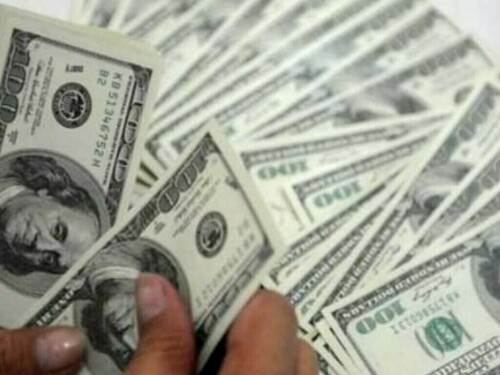Pakistani Rupee’s Performance Against US Dollar
During Monday’s initial trading hours, the Pakistani rupee experienced a slight decrease in value against the US dollar, falling by 0.02%.
At 10 a.m., the local currency was recorded at 283, reflecting a loss of Re0.04 against the dollar.
Over the past week, the rupee’s value declined, with a depreciation of Re0.79, equivalent to 0.28%, against the US dollar. The local currency concluded the week at 282.96, compared to the prior week’s closing of 282.17 against the dollar, as per the State Bank of Pakistan (SBP).
Global Market Factors
On the global stage, the US dollar strengthened against major currencies on Monday. This was fueled by investors seeking safe-haven assets amidst concerns that the conflict between Israel and Iran could escalate into a larger regional crisis, as they prepared for a week filled with central bank meetings.
With neither Iran nor Israel indicating a willingness to de-escalate their actions, the possibility of Tehran potentially disrupting the Strait of Hormuz – a vital global gateway for oil transportation – introduced broader economic risks stemming from potential disruptions in the energy-rich Middle East.
Furthermore, planned discussions between Iran and the United States regarding Tehran’s nuclear program were postponed following Israel’s unexpected attack on Friday.
On Monday, the dollar saw a 0.14% increase, reaching 144.3 Japanese yen. Meanwhile, the euro experienced a 0.14% decrease, settling at $1.1534. During early trading in Asia, the dollar remained stable against the Swiss franc at 0.81, and an index measuring the dollar’s value against six other currencies held steady at 98.25.
Currencies positively correlated with risk, such as the Australian and New Zealand dollars, saw marginal gains.
Geopolitical tensions present a new challenge for investors and central bank officials. They have been grappling with economic instability caused by actions aimed at reshaping global trade this year.
Despite the dollar’s overall appreciation in recent sessions, analysts are hesitant to predict the continuation of this trend until greater clarity emerges regarding trade policies.
The currency has diminished more than 9% this year. Investors are still worried about the deadlines on trade agreements that are due in approximately three weeks. Agreements with major trade partners, including the European Union and Japan, are yet to be finalized.
Investors will now be monitoring advancements from any bilateral discussions with the U.S. during a Group of Seven leaders meeting in Canada.
Oil Price Surge
Oil prices, a critical indicator for currency values, increased on Monday, building on Friday’s gains. Renewed attacks by Israel and Iran over the weekend intensified worries that the conflict could spread across the region, causing major disruptions to oil exports from the Middle East.
Brent crude futures increased by $1.12, or 1.5%, reaching $75.35 a barrel by 0019 GMT, while U.S. West Texas Intermediate crude futures rose by $1.10, or 1.5%, to $74.08. Earlier in the session, they had surged by more than $4.
Both benchmarks concluded 7% higher on Friday, having surged more than 13% during the session to their highest levels since January.
This information reflects an intra-day market update.



Comments (0)
No comments yet. Be the first to comment!
Leave a Comment